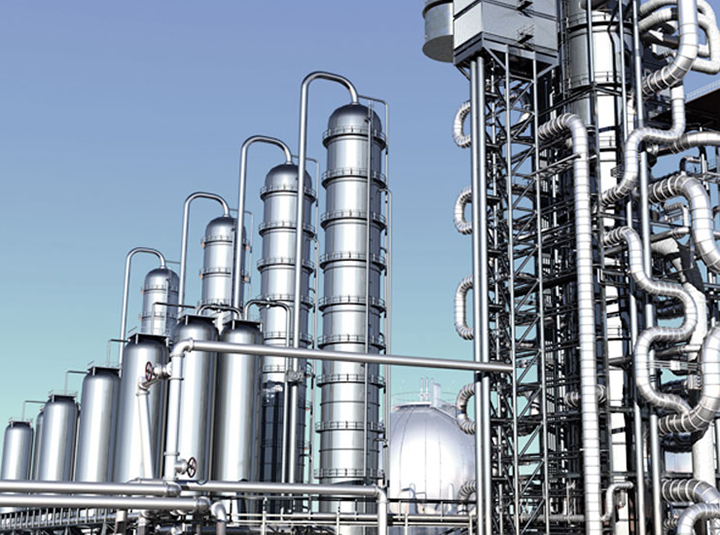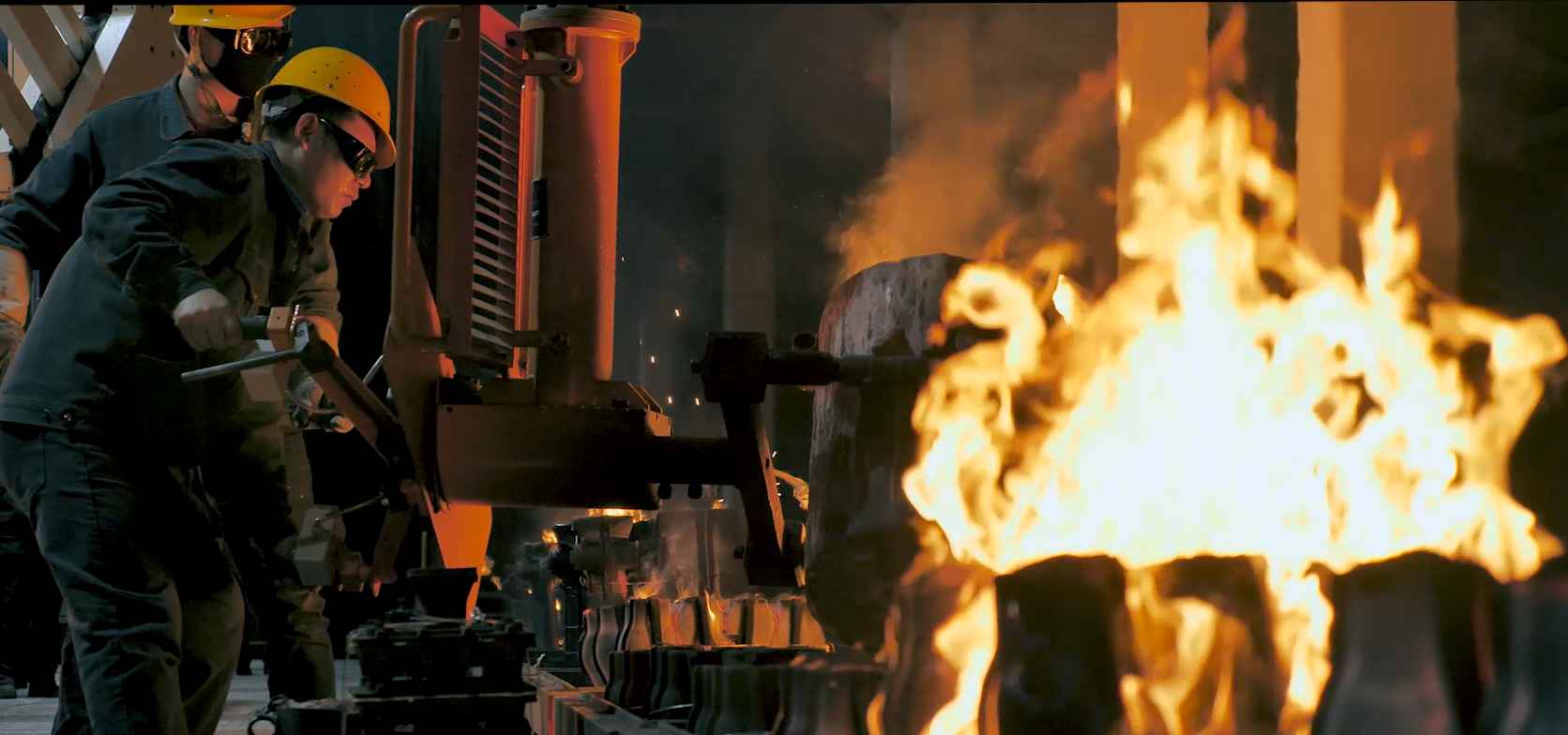The butterfly valve is a mechanism that regulates the flow of materials in a large pipe diameter through a quarter-turn rotation of the disc.
A rod passes through the center of the disc, and this rod is connected to a drive that controls the movement of the disc. The position of the disc is parallel or perpendicular to the flow of the medium. The butterfly valve is different from other valves because the butterfly plate is always in the fluid, resulting in pressure changes at any position of the valve.
The butterfly valve regulates the flow by starting, decelerating, or stopping the medium. The disc opens and closes with a low torque of 90 degrees, which is suitable for any compatible application. Because of their low cost and lightweight, butterfly valves are generally more popular than other types of valves.
For some processes, extreme temperatures and corrosion are factors that can easily damage the valve seal. Butterfly valves can withstand extreme cold or extreme heat. This means that the integrity of the sealing device is critical for high-risk applications such as energy production and oil processing (because a leak may threaten public safety or the environment).
Butterfly valves need regular maintenance and repair after working in different working environments for a period of time. General maintenance can be divided into minor repairs, medium repairs, and heavy repairs.
The specific analysis depends on the environmental conditions of the pipeline. Because different industries require different maintenance and repair procedures, for example, in the pipeline maintenance of petrochemical enterprises, the pipeline pressure is required to be lower than PN16MPa, and the medium temperature is lower than 550°C. Different maintenance conditions are required for various physical and chemical pipeline transportation media.
Butterfly valve
The minor repair process of various pipeline butterfly valves, including cleaning nozzles and oil cups, replacing o-rings, cleaning threads and valve stems, removing debris in the valve, tightening screws, and configuring handwheels. All of these can be used as scheduled maintenance. Medium repair: including minor repair items, replacement of clean parts, valve body repair, sanding of seals, valve stem straightening, etc. These items can be used for an overhaul in the factory. Heavy repair: Included in the mid-repair project, replacement of valve stems, repair of brackets, replacement of springs and seals. When these are needed, the butterfly valve suffers huge damage.
In order to prevent rust and oiling, butterfly valves should be properly maintained.
At the top of the valve, there is a lubricating oil fitting. This may not be observed when the valve arrives. Make sure to apply grease to the neck of the valve at regular intervals until the excess grease flows out.
In the gearbox, you can use lithium-based grease for maintenance.
You can use any silicon-based product/lubricant to easily clean all parts of the valve.
If you do not use it frequently, please try rotating or cycling the butter valve once a month.
Lugged, wafer and double flanged butterfly valves of all materials and seat types are easy to use and long lasting as long as they are installed and maintained correctly.
Storage Conditions
ㆍTo protect the seat and seals, do not unpack the valves until they are ready for installation. By doing this you are protecting the valve from dust and debris which may eventually cause seat leakage.
ㆍKeep in a cool well ventilated space if storing for a longer period of time.
Valve Installation
ㆍValves can be installed in any orientation however it is best if it can be installed upright especially in bigger sizes to reduce load on the shaft caused by the actuator or gearbox trying to pull away.
ㆍIt is common for smaller butterfly valves to be mounted in various orientations eg water trucks. This is fine and is common practice.
ㆍVerify the material of the butterfly valve, seat and disc before installation. Ensure that there are no defects caused by storage or transportation.
ㆍVerify the pressure rating of the valve vs the application requirement.
ㆍWhen installing directly to a pump or another valve be sure to have a pipe spacer between them to allow for the butterfly disc to open.
ㆍComplete all welding works before valve installation and be sure the flange has cooled to ambient temperature before installing the butterfly valve.
ㆍMake sure there is no welding residue, waste, rust or other debris in the pipe before installation. Wash with water or a mild detergent if needed.
ㆍClean the surface of the flange that will come in contact with the butterfly valve to ensure it is free of rust and debris. Wash with water or a mild detergent if needed.
ㆍMake sure there is no warpage of the flange or misalignment of the butterfly valve in relation to the flange. This is the most common cause of butterfly valve problems where it is not aligned with the flange/pipe correctly and the disc catches when trying to open/close. Support the valve where necessary to reduce load from the piping assembly.
ㆍInstall spacing bolts taking care not to damage the valve seat and adjust the face to face of the two flanges so there is space when the piping is spread open (enough space to remove the valve or replace it for maintenance).
ㆍOnce the pipes are centred, insert the bolts so that the bottom of the valve can rest upon them to prevent the valve from falling through.
Before tightening the bolts operate the valve to ensure it does not catch on the pipework or the flange.
ㆍTighten the bolts one at a time doing it in stages so even pressure is applied and a seal is formed between the valve and flanges.
ㆍOnce the installation is complete operate the valve several times to ensure it is free from impingement and it has not moved during installation.
Solder butterfly valve
Field Testing
ㆍRubber seated butterfly valves are designed to hold rated pressures only. Test pressures above rated working pressure in the closed position can cause damage to the valve.
ㆍWith the disc in the open position the pipeline can be tested up to the valve hydrostatic test pressure.
ㆍSeat leakage can occur with foreign material between the seat and disc. If this occurs open the valve 10 to 15 degrees to obtain high velocity flushing action. Close and repeat if necessary.
ㆍSeat leakage can result from a rotational shift in position of the disc in relation to the body. Readjust the closing stop on the actuator/gearbox as necessary.
ㆍFor dry applications acutator stops can be adjusted to stop the disc burying all the way into the seat. This will still allow a bubble tight seal but prolong life span of the seat.
Operation
ㆍDo not use the valve at pressures above its working pressure.
ㆍIf the valve is jammed in a position between open and closed check the actuator operation. If necessary remove the actuator and manually operate the valve to fault find. Remove and check valve for foreign objects if required (see maintenance).
ㆍExcessive torque from the actuator can damage the internal valve parts.
Maintenance
ㆍCycle the valve once a month or more if it is not used regularly.
ㆍRelieve the system pressure before maintaining the valve.
ㆍTo remove from pipework reverse the installation sequence.
ㆍReplace valve seat (liner) by removing the stem and disc. Press out liner and replace with new part. Reinstall the disc and stem along with seals and clips. Refit into line as in installation sequence.
ㆍIf the valve is operating in a dry application (eg compressed air) ensure to lubricate the disc and seat regularly to prolong life span
ㆍFor operational instructions please see each video link under products.
ㆍDesign Guidance & Product Advantages
ㆍWhen sizing the valve always consider available space for the actuator and feedback devices.
ㆍConsider valve supports to carry excess loads.
ㆍExtension shafts in SS316 are available upon request. This allows valve to be buried in pits and actuators to be above ground.
We are butterfly valve suppliers. Please feel free to contact us if you are interested in our butterfly valve or other products.









